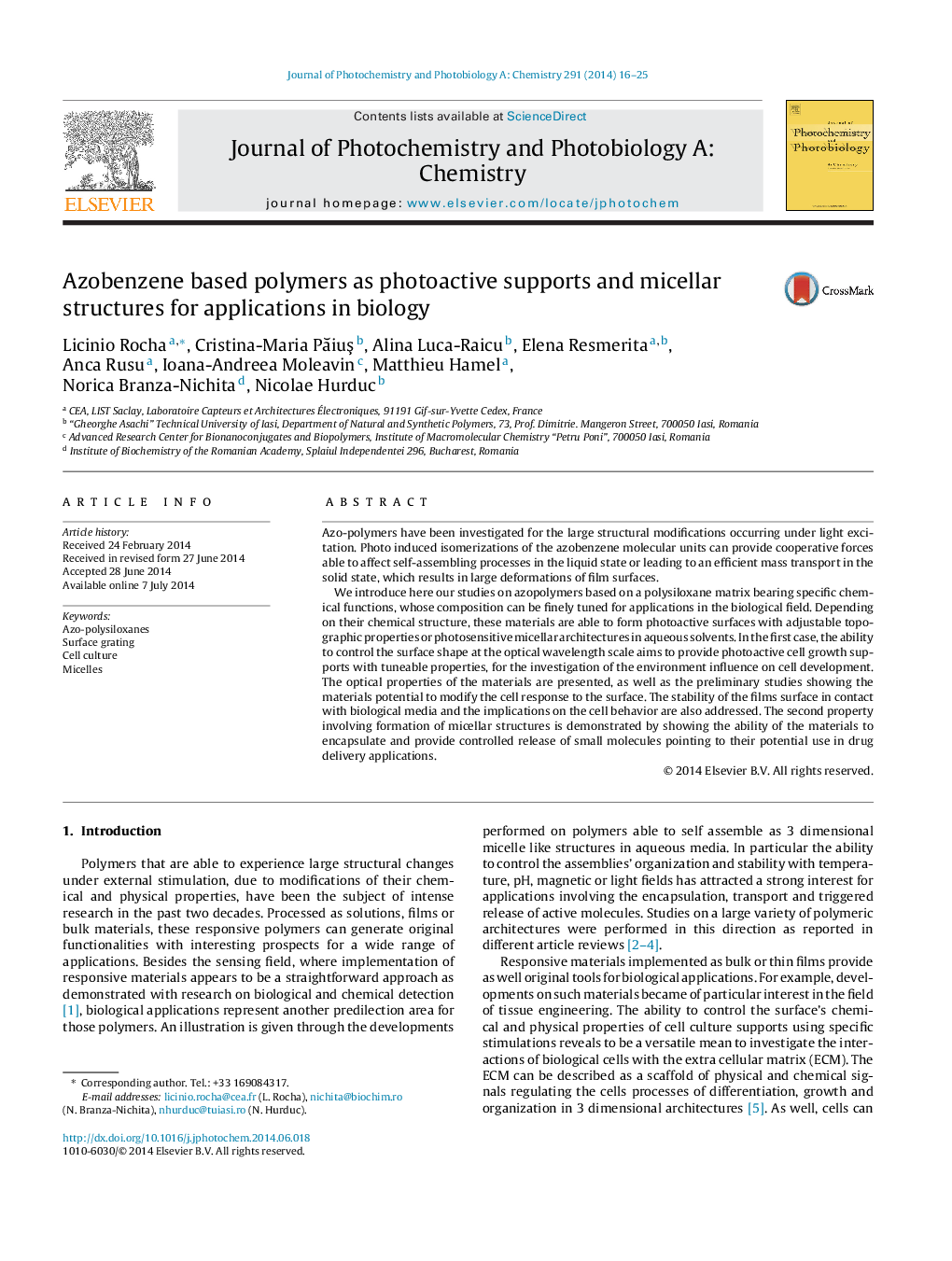| Article ID | Journal | Published Year | Pages | File Type |
|---|---|---|---|---|
| 25894 | Journal of Photochemistry and Photobiology A: Chemistry | 2014 | 10 Pages |
•Azo-polysiloxanes as photosensitive biomaterials.•Photoactive surfaces with adjustable topographic properties for cell culture.•Photoactive micellar structures in aqueous solvents for drug delivery applications.
Azo-polymers have been investigated for the large structural modifications occurring under light excitation. Photo induced isomerizations of the azobenzene molecular units can provide cooperative forces able to affect self-assembling processes in the liquid state or leading to an efficient mass transport in the solid state, which results in large deformations of film surfaces.We introduce here our studies on azopolymers based on a polysiloxane matrix bearing specific chemical functions, whose composition can be finely tuned for applications in the biological field. Depending on their chemical structure, these materials are able to form photoactive surfaces with adjustable topographic properties or photosensitive micellar architectures in aqueous solvents. In the first case, the ability to control the surface shape at the optical wavelength scale aims to provide photoactive cell growth supports with tuneable properties, for the investigation of the environment influence on cell development. The optical properties of the materials are presented, as well as the preliminary studies showing the materials potential to modify the cell response to the surface. The stability of the films surface in contact with biological media and the implications on the cell behavior are also addressed. The second property involving formation of micellar structures is demonstrated by showing the ability of the materials to encapsulate and provide controlled release of small molecules pointing to their potential use in drug delivery applications.
